Hanoi is building a hard median strip on Vo Chi Cong and Pham Van Dong streets to separate cars and motorbikes. According to the plan, it will be officially applied from July 1.
According to the leader of the Hanoi Department of Construction, separating vehicle lanes will help increase order, smoothness, and safety for traffic, reduce congestion and accidents. In particular, it will help traffic participants easily recognize the lane, move in the correct lane, and avoid crowding during rush hour.
However, in recent days, there have been two streams of opinion on social media surrounding the installation of the above mentioned hard divider. Among them, many opinions say that installing the hard divider will not be effective because Hanoi has installed a hard divider on Nguyen Trai Street and then removed it. Moreover, for nearly a week now, during rush hours, the car lanes on these two streets have always been congested, in addition, there have been cases of pedestrians crashing into the hard divider.
Talking to VietNamNet about this issue, Dr. Tran Huu Minh, Chief of Office of the National Traffic Safety Committee, highly appreciated Hanoi's installation of hard median strips to separate car and motorbike lanes on the two roads.
“In terms of traffic organization techniques, this is a necessary thing to do. Separating lanes will certainly improve safety, especially in the current context when cars are mixed with motorbikes and other rudimentary vehicles on these two routes.
I have been on these roads many times and have noticed that although the roads are wide, some motorbikes still enter very dangerous lanes, which are the lanes close to the median strip where cars travel at high speed. When a collision occurs, although it is not yet known who is right and who is wrong, the consequences for the motorbike rider will be very serious.
Besides, there are also some cars driving recklessly, encroaching on the right lane – which is supposed to be for motorbikes. This also significantly increases the risk of collision between cars and motorbikes,” Mr. Minh acknowledged.
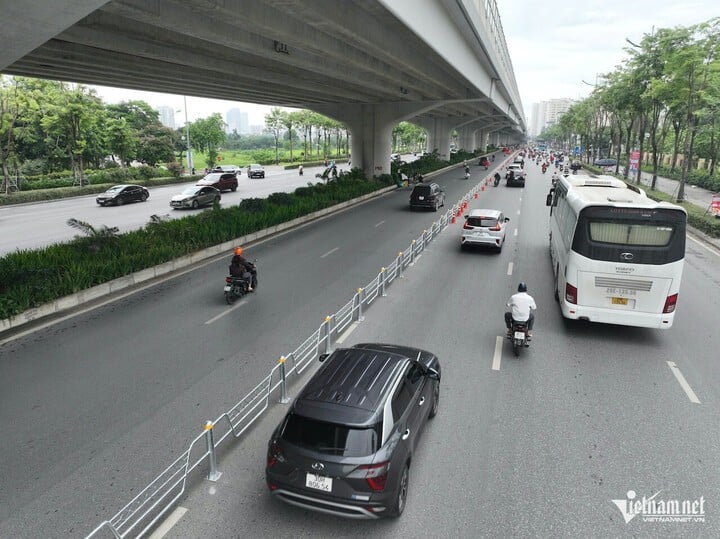
Therefore, Mr. Minh believes that with the mixed traffic model, it is necessary to separate the weak traffic flow (motorbikes, motorbikes, bicycles) from the high-speed cars and that is what Hanoi is trying to do.
“On a 5-lane road, it is quite reasonable to separate 3 lanes for cars and 2 lanes for 2-wheelers. If traffic organization includes speed management, arrangement of waiting space and close coordination with traffic light cycles, this can become a typical model to apply to other main roads in Hanoi.
Of course, there will certainly be some problems when implementing. These routes have many access points and the economy of the area depends heavily on the trading and buying and selling activities of the businesses along both sides of the road. This creates a huge demand for travel, turning, stopping for many means of transport, including cars, motorbikes, bicycles and pedestrians.
Therefore, if we allow cars to travel in all 5 lanes (ie both motorbike lanes), we must manage and control the speed of cars in mixed traffic with motorbikes. According to international recommendations and experience, the speed should be uniform and not exceed 50 km/h.
Lane splitting is better overall, however, given the traffic characteristics I just mentioned, some road users may benefit, while others may experience slight disadvantages. That is perfectly normal,” Mr. Minh said.
There should be comparison and evaluation before and after implementation.
Mr. Tran Huu Minh said that the road management agency should study and immediately have specific solutions. For example, if it is believed that after installing the hard divider causing congestion, there should be a comparative assessment before and after implementation.
Congestion assessment should be expressed in specific indicators based on travel time along the route or waiting time at intersections.
This is the most convincing evidence to explain to the public, instead of just general assessment that after implementation, the traffic is more congested or more open. In fact, maybe the car lane is a little more congested but the motorbike lane is more open.
In particular, the management agency must determine what the overall criteria are to evaluate the plan. If people's safety is the number one factor, it is necessary to provide data to evaluate how many traffic accidents the plan is expected to reduce. The world already has methods and procedures for this issue. Hanoi can refer to and immediately apply them to the current situation.
"This road axis is similar to Vo Van Kiet Avenue in Ho Chi Minh City. Ho Chi Minh City is organizing traffic on this avenue very well, from speed management, lane division, to organizing intersections. Hanoi should refer to the above model," Mr. Minh suggested.
The current debates, although they may be reasonable for each specific case or individual – about more congestion, more ventilation, better or worse – are still basically emotional, according to Mr. Minh. Because these opinions do not have specific numbers to prove, and therefore will lead to an endless debate.
Technical solutions to avoid hitting the median strip Regarding accidents that occur on median strips, Mr. Minh said that Hanoi needs to consider adding reflective paint or placing clear reflective spots in front of median posts. In addition, it is possible to create moderate speed bumps in front of the lane to warn traffic participants. He also paid special attention to lessons and shortcomings often encountered in the past such as: unreasonable light cycles, space or number of lanes not suitable for traffic volume, lane entry instructions too late, or inappropriate solid and broken lines. “The management agency needs to quickly identify these problems and come up with technical solutions. These are all very cheap, simple solutions that will certainly immediately reduce unfortunate situations and significantly reduce traffic congestion on this route,” Mr. Minh commented. | |
Source: https://baolangson.vn/chanh-van-phong-uy-ban-atgt-quoc-gia-noi-ve-viec-ha-noi-lap-dai-phan-cach-cung-5051014.html




![[Photo] More than 124,000 candidates in Hanoi complete procedures for the 2025 High School Graduation Exam](https://vphoto.vietnam.vn/thumb/1200x675/vietnam/resource/IMAGE/2025/6/25/fa62985b10464d6a943b58699098ae3f)
![[Photo] General Secretary To Lam works with the Standing Committee of Quang Binh and Quang Tri Provincial Party Committees](https://vphoto.vietnam.vn/thumb/1200x675/vietnam/resource/IMAGE/2025/6/25/6acdc70e139d44beaef4133fefbe2c7f)
![[Photo] First training session in preparation for the parade to celebrate the 80th anniversary of National Day, September 2nd](https://vphoto.vietnam.vn/thumb/1200x675/vietnam/resource/IMAGE/2025/6/25/ebf0364280904c019e24ade59fb08b18)

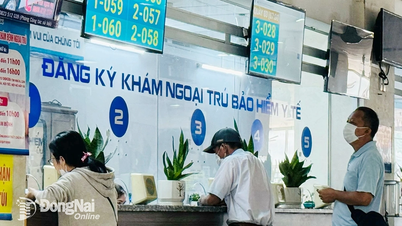


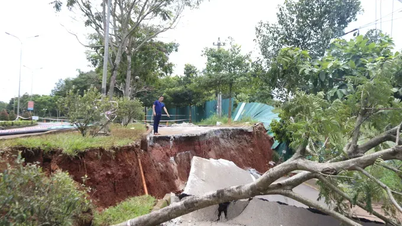

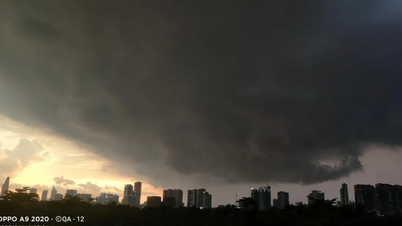










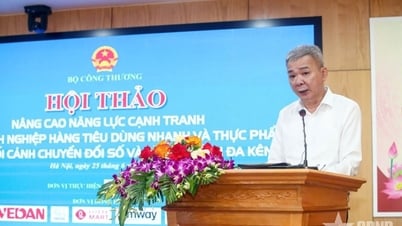

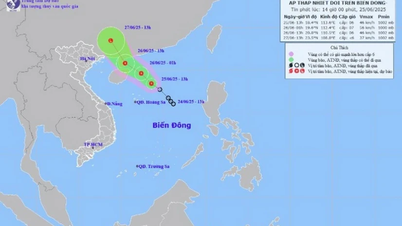















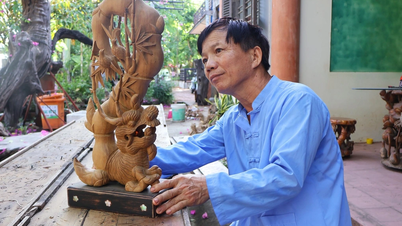











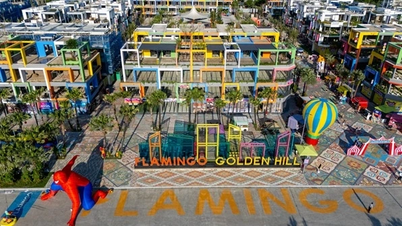






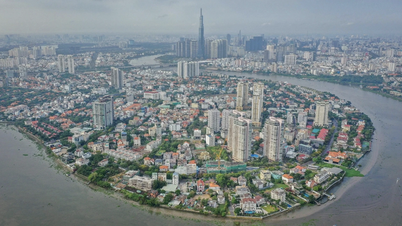







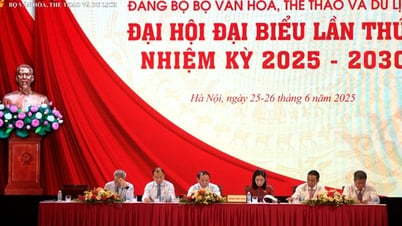


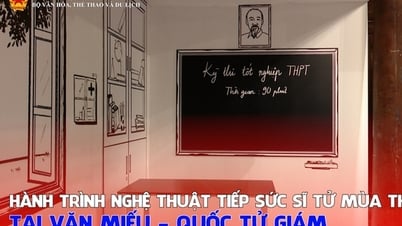


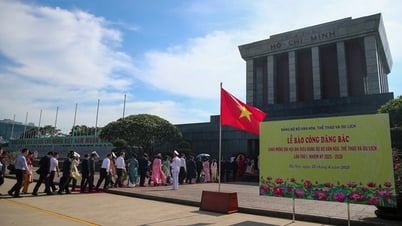
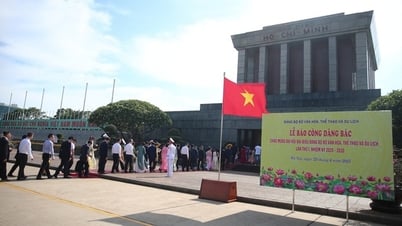



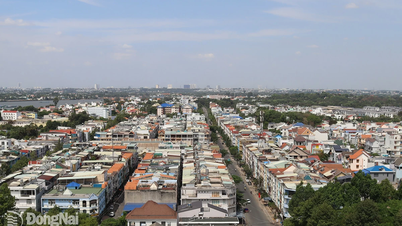




















Comment (0)